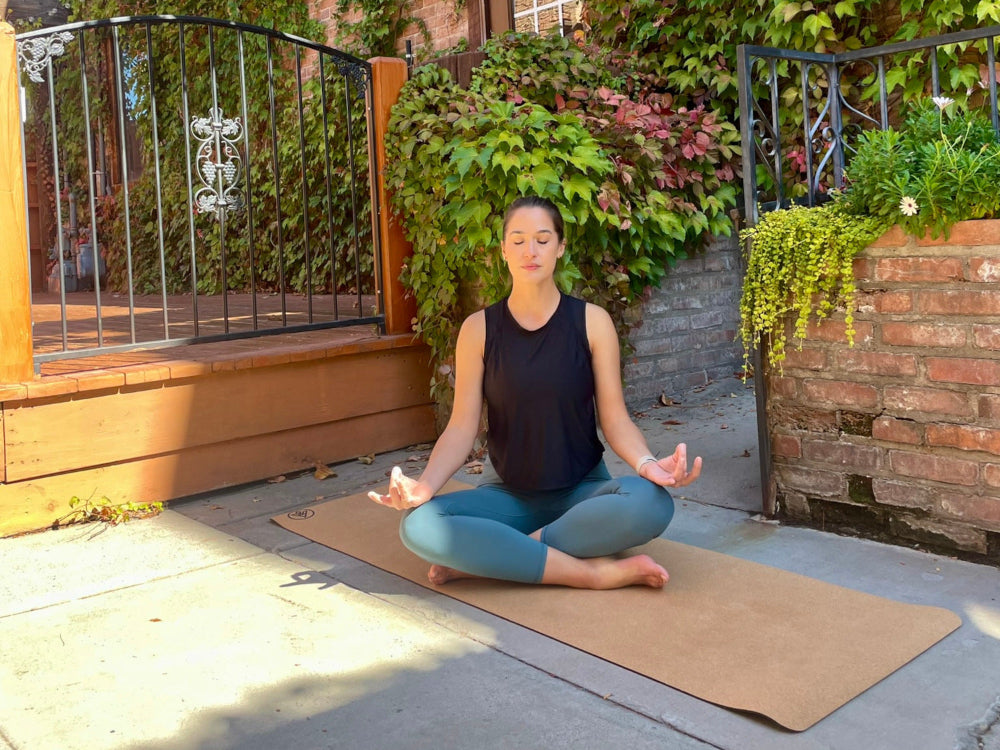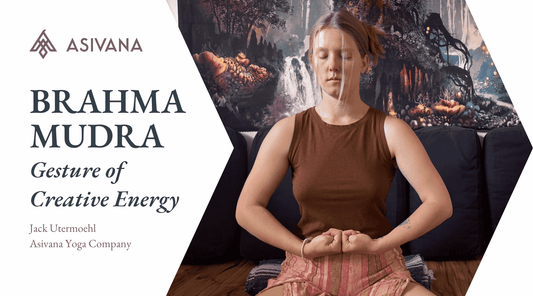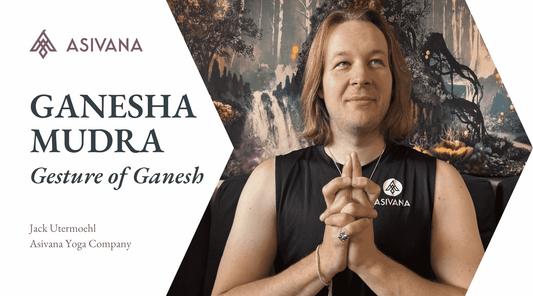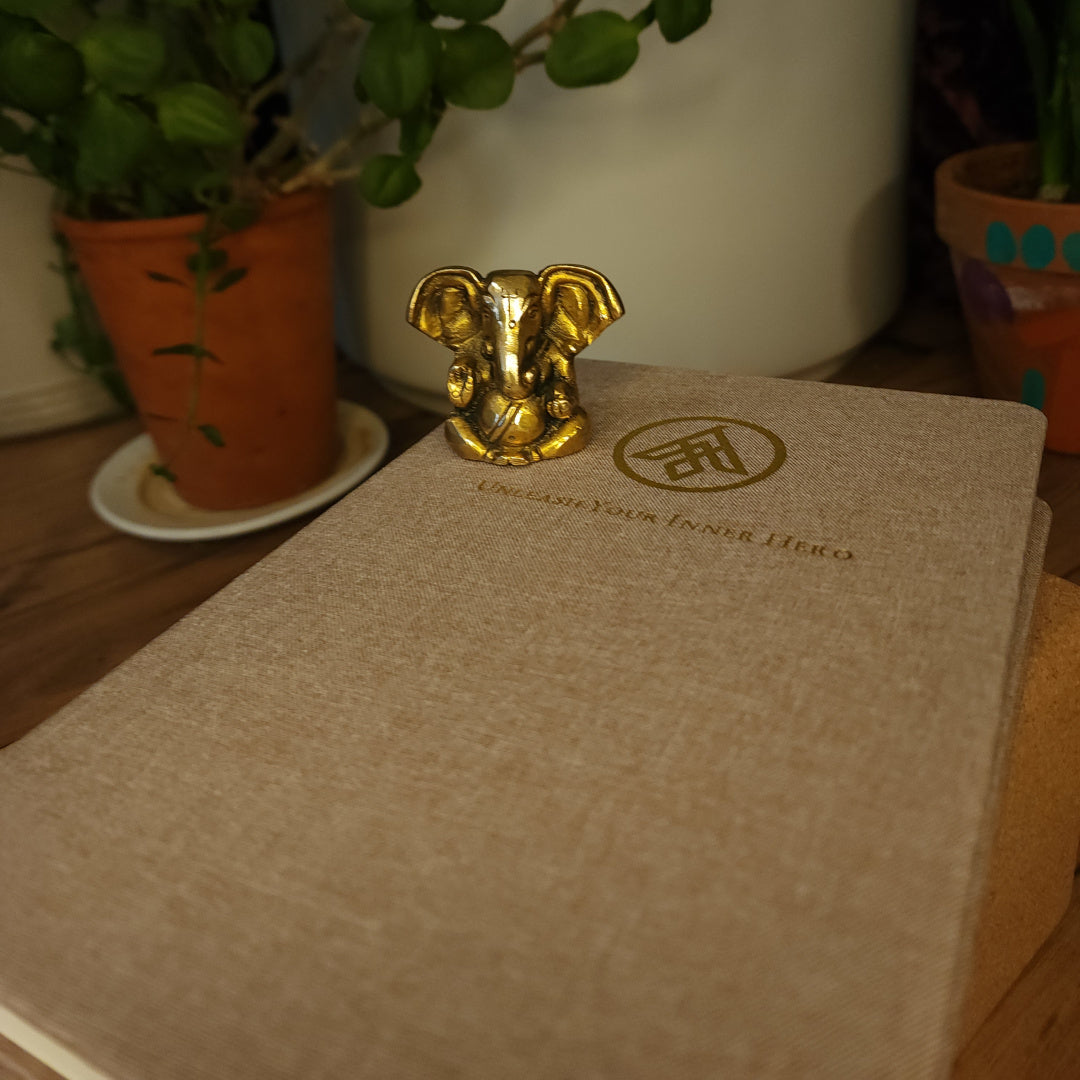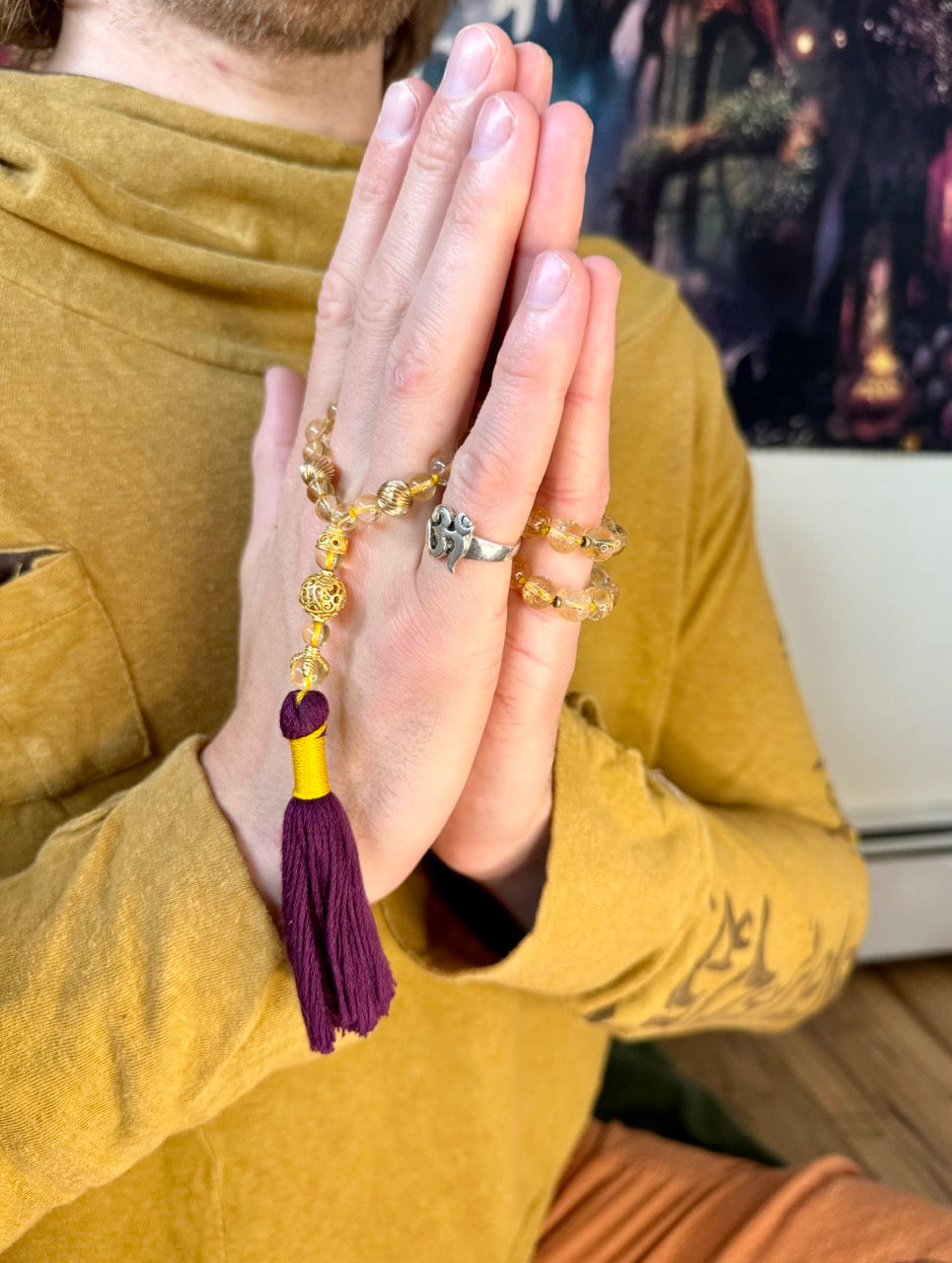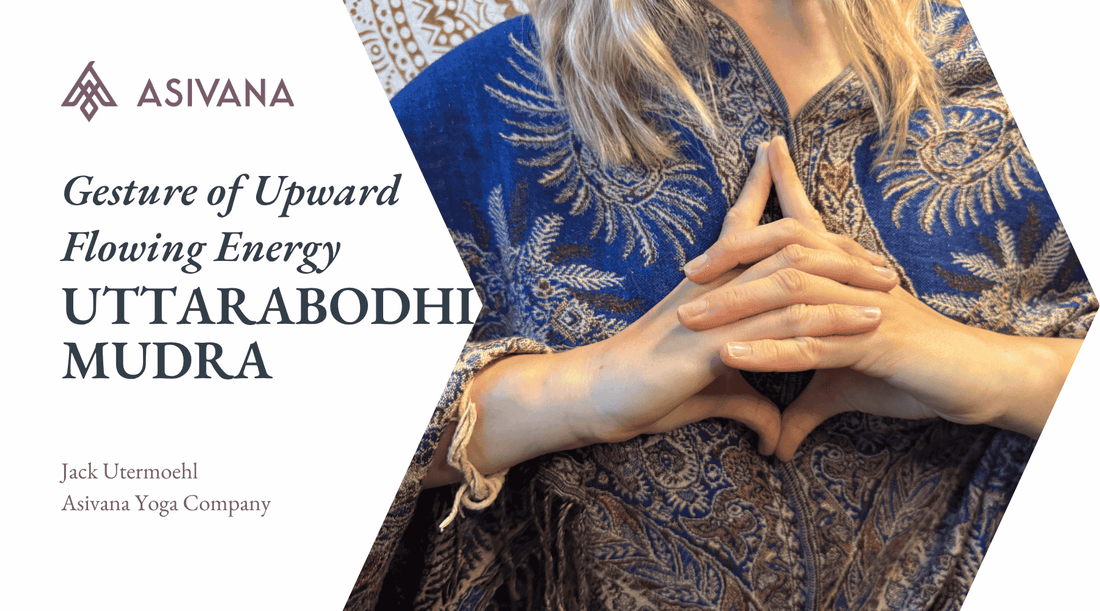
Uttarabodhi Mudra - Gesture of Upward Flowing Energy
Jack UtermoehlShare
Uttarabodhi Mudra (Gesture of Upward Flowing Energy)
Uttarabodhi Mudra is a powerful hand gesture that channels prana upward through the central axis of the body. Its name comes from the Sanskrit words uttara (उत्तार) meaning "higher" or "upward" and bodhi (बोधि) meaning "awakening" or "enlightenment." Together, the mudra’s name can be translated as the "gesture of highest wisdom" or "gesture of upward awakening."
This mudra is formed by interlacing the fingers with the index fingers extended and touching, pointing upward, and the thumbs joined and angled downward. It is traditionally held at the heart center, symbolizing the unification of wisdom and compassion.
The upward orientation of the index fingers channels prana (lifeforce energy) toward the higher chakras, while the thumb connection stabilizes the gesture with grounding and integrity.
Uttarabodhi Mudra is ideal for times when you feel scattered or disconnected from your purpose. It reminds the practitioner that spiritual growth is about aligning and anchoring with a higher vision into daily life.
Sanskrit Name: Uttarabodhi Mudrā – उत्तरबोधि मुद्रा
English Translation: Gesture of Upward Flowing Energy
Alternate Name: Gesture of Highest Wisdom
Phonetic Spelling: oo-tär-uh-boh-dhee moo-drah
Energetically, this mudra draws life force from the base of the spine through the heart and into the upper chakras, especially the crown. By engaging the breath and lifting awareness vertically, it supports clarity, devotion, and inner alignment.
The heart-level placement allows the practitioner to harmonize personal truth with higher truth, cultivating authenticity that flows from within.

Instructions to Perform Uttarabodhi Mudra
Find a comfortable seated position such as sukhasana (easy pose), vajrasana (thunderbolt pose), or sit upright in a chair. Keep the spine gently elongated and the shoulders relaxed.
Hand Position: Interlace all fingers except the index fingers and thumbs. Extend the index fingers straight and touch them together. Join the thumbs and point them downward, forming a triangle below the index fingers.
Placement: Hold the mudra at the center of the chest, allowing the thumbs to rest lightly against the sternum.
Breathing Technique: Practice slow, deep breathing. Inhale fully into the lungs and chest. With each exhale, release tension from the lower body. Visualize energy flowing upward with each inhale.
Duration: Practice for 5 minutes during meditation, pranayama, or introspective sitting. This mudra is especially powerful at the beginning or end of a yoga practice.
Benefits of Uttarabodhi Mudra
Uttarabodhi Mudra activates upward-moving energy (udana vayu), bringing balance to the entire energetic system. It enhances awareness and integrates higher guidance into embodied living.
Physical Benefits: Opens the chest, expands lung capacity, supports posture, and boosts circulation to the brain and upper body.
Mental Benefits: Improves mental clarity and confidence. Cultivates discernment and encourages integrity in thought and action.
Emotional Benefits: Calms emotional turbulence, supports emotional maturity, and helps you act from alignment rather than reaction.
Spiritual Benefits: Strengthens connection to higher self and universal wisdom. Supports transformation, realization, and purposeful living.
Elevate Your Mudra Practice
Capture your insights and deepen your connection with our Yoga Journal.
Symbolism and Meaning of Uttarabodhi Mudra
This mudra’s structure is steeped in symbolism. The two extended index fingers create a single upward line representing the path of the spine and the ascent of consciousness through the chakras. The downward-pointing thumbs root the practice in humility and self-awareness, representing the descent of consciousness into a stable foundation for spiritual growth.
The interlaced fingers reflect inner unity. Where other mudras may direct energy outward or downward, Uttarabodhi Mudra gathers it at the heart and lifts it upward. It reminds us that awakening comes from an alignment when intention, breath, body, and spirit move in the same direction.
This gesture shares kinship with Jnana Mudra (gesture of knowledge) and Citta Mudra (gesture of heart-mind). Each invites inward focus, but Uttarabodhi uniquely channels that energy upward for transformation and integration.
When to Practice Uttarabodhi Mudra
This mudra is especially beneficial when seeking clarity, direction, or inspiration. Use it during:
- Meditation to elevate energy and insight
- Pranayama to harmonize the breath and subtle body
- Post-asana to seal practice with integrity and heart alignment
- Moments of transition or challenge to reconnect with purpose
Suggested practice duration: 5 minutes. Longer sessions may support deeper transformation when paired with visualization or mantra repetition.
Contraindications for Uttarabodhi Mudra
This is a safe and gentle gesture, though some practitioners may experience physical discomfort in the hands or shoulders.
- Modify hand placement lower or further from the chest if shoulder tension arises
- If wrist sensitivity is present, take breaks or use a soft prop to support the hands
- Pair with breathwork if the mudra intensifies mental activity
Additional Insights on Uttarabodhi Mudra
Affirmations: “I flow upward with integrity and wisdom.” / “I align with my highest path.”
Visualization: Imagine a radiant column of light extending from your heart to the crown of your head. With each inhale, the light grows stronger, connecting you to higher truth. With each exhale, tension and doubt melt away.
Associated Chakras: Anahata (Heart) for compassion and coherence, Vishuddha (Throat) for truth, and Sahasrara (Crown) for illumination and union.
Paired Asanas: Vajrasana, Padmasana, or any meditative posture with an open chest and grounded seat.
Related Pranayama: Ujjayi (victorious breath) to support steady, upward movement of prana.
Meditation Techniques: Use during intention setting, silent meditation, or mantra practices oriented toward transformation or self-mastery.
Variations and Modifications
Alternative Hand Positions: Hold the mudra slightly lower, closer to the solar plexus, if shoulder tightness prevents holding at the sternum. You may also try a version with fingers more loosely interlaced for a gentler expression.
Adaptations for Beginners: Begin with shorter sessions of 2 minutes. Rest elbows on cushions or knees to reduce arm fatigue. Be mindful to keep the hands soft rather than tense—intention is more important than precision.
—— 🕉 ——

Personal Insights
We often hear or think that upward lifting is the only positive direction but that's not always true. Sometimes the body craves different flows of prana. When we get stuck in a flow, we might find a need to become unstuck.
That's where I feel the upward lifting prana flow is best. When we draw our prana upwards, we're creating a flow and shift towards movement. Lighter and more spaciousness. This facilitates more movement both physically but also emotionally.
Feeling down? Unable to see the path forward? Get above the clouds and see the sun.
Uttarabodhi Mudra will give you the drive to move forward and onward.
When do you want upward flowing energy?


